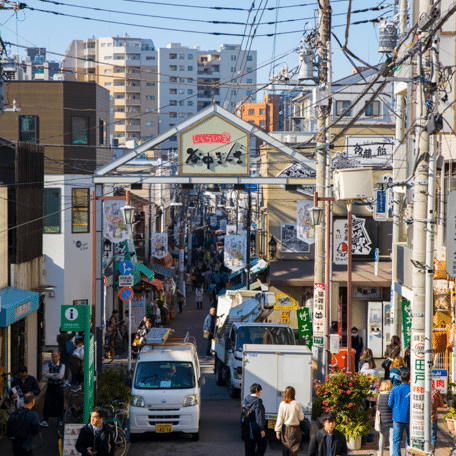Donabe – The MVP of Japanese Winter Cooking and Cookware
Feb 8, 2022
BY Luna Cullis

Winter. The season of cold nights, staying in, warm drinks by the fire, and for Japan – the hotpot. For those chilly winter evenings, there’s nothing better than getting the whole family together and sitting around a warm meal cooked in a traditional clay pot or donabe (土鍋).

Credit: Luna Cullis
Iga Ware and the Humble Beginnings of the Donabe
Simultaneously steeped in ancient tradition (as well as being a key feature of modern-day Japanese cooking), the donabe’s origins stretch as far back as the early 8th century during the Nara period when the production of Iga ware (a style of traditional Japanese pottery originating in Iga, Mie Prefecture) was first recorded.

Credit: Lauren Shannon
Shaped by hand and fired in a kiln at extreme temperatures, Iga ware or Iga yaki is known for its distinct appearance, usually marked by spots of green ash, scorching, and thin cracks throughout the clay. Built with stepped chambers, the kilns used in the production of Iga ware are what shape the identity of these singular pots. Originally baked in firewood kilns, high temperatures of 1400 degrees Celsius cause the clay to crystallize as ash builds up and melts on the surface. The durable nature of the clay allows it to be fired in the kiln multiple times without the risk of cracking and it is this process that creates the unique glassy, jade glaze that is so synonymous with Iga pottery. Though perhaps most commonly known in modern-day for its donabe, we can trace the humble beginnings of Iga ware back to the infamous Japanese tradition of the tea ceremony.
Artistic License – Why Each Ware Is So Unique
Originally used to make water vases to hold flowers during these tea ceremonies, Iga ware is known for its characteristic “ears,” or mimitsuki, which are clay handles added at the final stage of production. It is said that these ears define the quality of the vase, as they express the strength and energy of each piece.
It is in the artistry of each individual vase where we can appreciate the Japanese aesthetic character of wabi-sabi most acutely. Though easier to express as a feeling rather than being described through words, wabi-sabi is an aesthetic feeling focused on the appreciation of natural imperfection and singularity. Iga ware’s rough surface texture and unique, often lopsided vases, therefore, highlight the essence of the wabi-sabi character. No two Iga wares are the same – resulting in each piece being one of a kind.

Credit: WireJess
What’s the Deal With Clay?
Iga ware owes its distinct heat-resistant quality to the centuries-old clay it’s made out of – unique to the Iga area. Some four million years ago, the iconic Lake Biwa extended all the way to Iga, and it was the clay that built up on the lakebed that was used in the production of Iga ware back then – and is still to this day the foundation of the incredible craftsmanship of modern Iga potters. The coarse nature of the clay results in a porous and fireproof product when baked, which is perfect for cooking classic dishes including shabu-shabu (Japanese hotpot) or nabeyakiudon (Japanese noodle dish).
As uses for traditional pottery developed throughout Japan, the donabe began to gain popularity, becoming widely used by the Edo period (17th century). Glazed on the outside and porous on the inside, this kitchen item became a staple in Japanese cooking and was often set on a grill on top of tatami mats (traditional Japanese hemp mats) or at the dinner table. Using a donabe allows heat to be distributed more evenly when cooking. Its ability to retain heat while cooling down is the secret behind the rich, full flavors of dishes cooked inside this extraordinary pot.

Bonding Over a Hotpot
Sitting around a bubbling donabe and sharing a communal meal is a quintessential part of Japanese winter culture. From a simple zosui (Japanese rice soup) to the classic shabu-shabu, the versatile donabe turns an everyday meal into a bonding experience for the whole family. Filling the donabe with a flavourful broth, waiting as it begins to bubble, and taking turns to dip small cuts of meat and vegetables inside is an experience everyone should try – the comfort of grandma’s cooking, but made by the whole family!
Although most modern-day Japanese households will still regularly prepare nabemono (hot pot dishes), the majority of meals are now cooked in an electric hotpot rather than the traditional clay. While the donabe remains popular amongst traditional restaurants and Japanese grandmas (including mine), the cultural shift towards modernity and ease seems to be leaving the donabe (and the unique flavors it creates) behind.
The Very Best Way to make Rice

Credit: Japan Design Store
Looking for that perfect bowl of cooked rice? Using a donabe to steam rice not only adds to the flavor, but creates a crispy bottom you just can’t get in a modern day rice cooker. Iga donabe are perhaps most well known as rice cookers due to the unique shape and design of each ware.
The slow heat distribution created by the thick clay ensures the rice maintains it’s soft, fluffy grains whilst keeping it warm – plus, by using the same donabe over and over again, the taste of the ingredients soaks into the clay and makes the rice taste even better. Many Japanese families will even have a large donabe specifically designated for cooking rice. Why not try it for yourself with this easy recipe from JustonecookBook?
Why Use a Donabe at All?
The gradual move away from tradition begs the question: Why use a donabe at all if the same dishes can be recreated in an easier to use electric version? The answer lies in the power of the clay itself. No modern hotpot can replicate the hours of handcrafting and baking that turn centuries-old clay into beautiful, one-of-a-kind pots designed specifically to enrich the flavor of classic family meals.
So, if you’re looking for an authentic Japanese food experience during the winter season, why not find a donabe and some people to share a meal with? Our friendly team of local travel guides can help you find the perfect nabemono restaurant to explore for the next time you’re planning a trip to Japan. Looking to experience Japanese culture from the comfort of your own home? Check out our specially curated online experiences!
Featuring photo credit: 挪威 企鵝 on Flickr
Learn more about Japanese Top foods on our online experience!
PIN THIS FOR LATER
Book your pocket wifi now to stay connected through your entire Japan Journey!

Be sure to get the JR Pass to make navigating Japan during your trip that much easier!

YOU MIGHT ALSO LIKE






